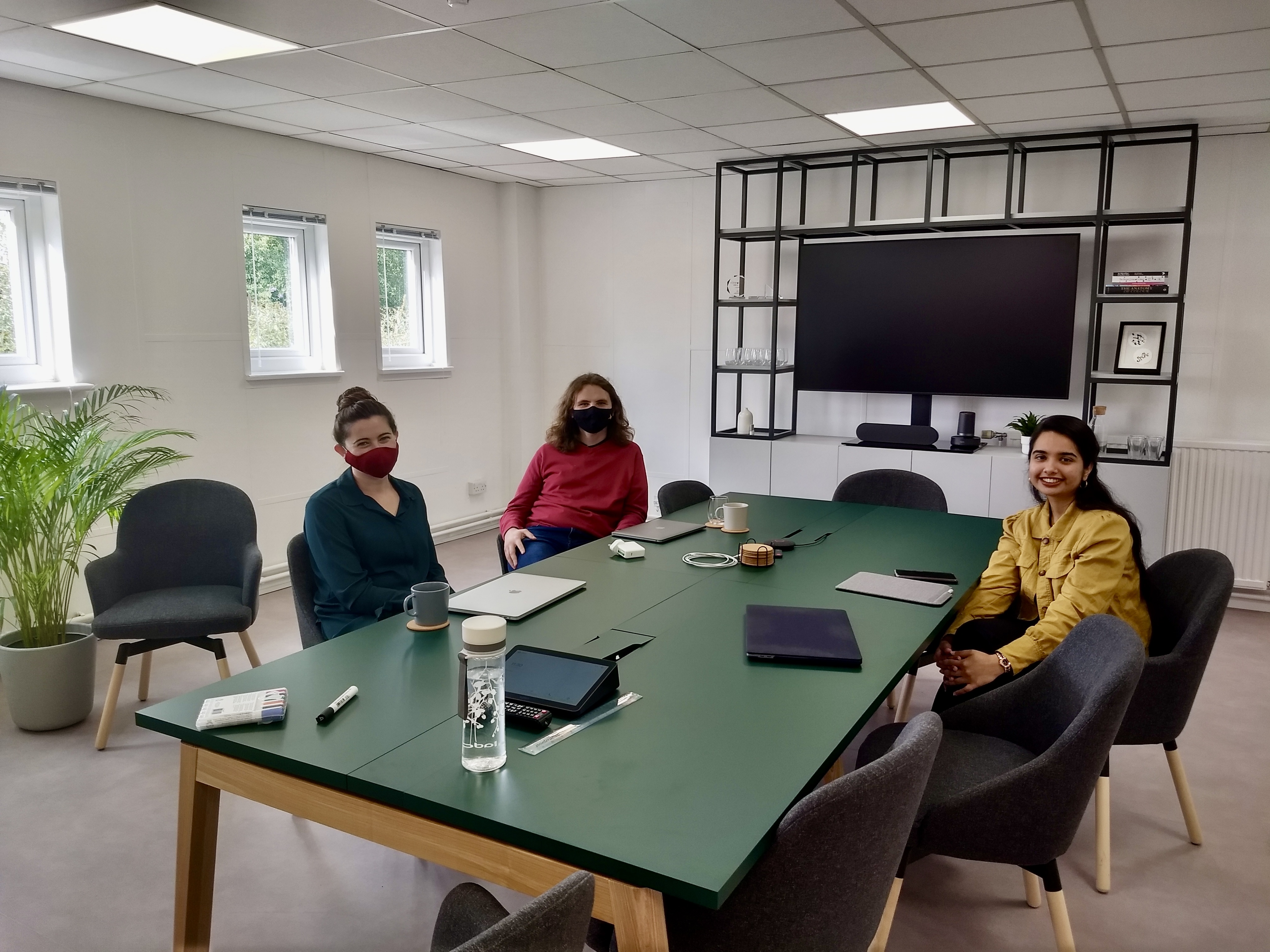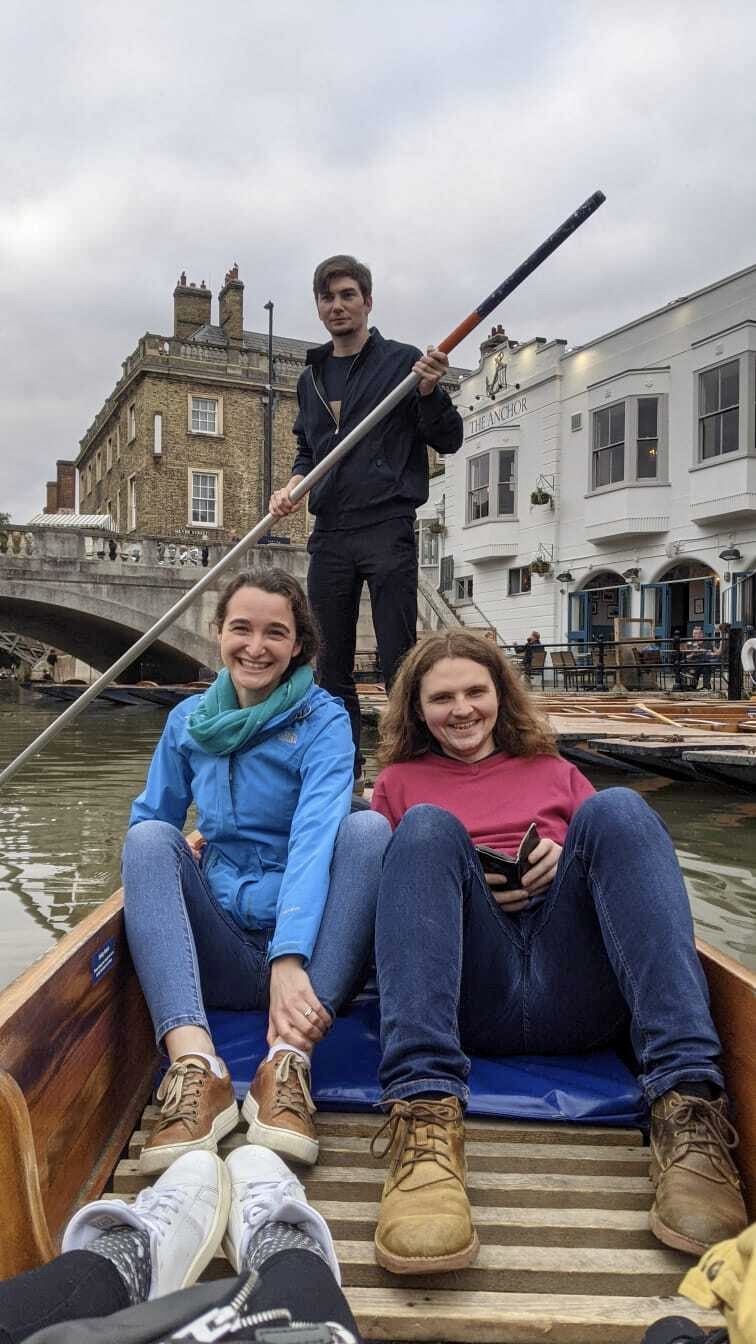This autumn, Colorifix welcomed its second intern to complete a three-month project with one of the Research and Development (R&D) teams. Daniel Richardson is a PhD student at The John Innes Centre developing bioinformatic tools to study evolution in snapdragons. For the past few months, he’s been working with our Informatics team applying his bioinformatics skills towards a new problem and learning lots along the way.

On Daniel’s last day, we sat down with him and his supervisor Helena.
How did you hear about Colorifix to begin with?
Daniel: As a BBSRC-funded PhD student, I’m able to undertake the PIPS scheme (Professional Internships for PhD Students). I was looking for a place to do this three-month placement when I heard a talk by Alicia from the Microbial Engineering team at Colorifix. I took a very immediate interest in a specific part of what makes up R&D at Colorifix: “using colour from nature.” That’s a relatively small part of how you’d introduce what the company does, but there’s so much that goes into that step alone that I just had to ask about it.
Well, I’m glad you found us. Before we go further, could you take a second to explain what bioinformatics even is?
Daniel: Bioinformatics is the use of computational tools to work with and to interpret biological data sets.
Can you give an example of what we need bioinformatics for?
Helena: One of the limiting factors in biology nowadays in general is data analysis. Scientists can perform many high throughput experiments that generate a huge amount of data, but how do we get valuable information out of that data? How do we analyse it and break it down so that it becomes something meaningful that can inform future work?
That’s where bioinformatics comes in handy— we turn data into information.
Tell me more about bioinformatics at Colorifix then. How does it play a role in creating our sustainable dyeing process?
Helena: Within Colorifix, we work on two different fronts when it comes to bioinformatics. One is at the first stage of our R&D. At the very beginning of the Colorifix process, before we start doing anything in the lab, we have to choose which pigment we’re going to try and bioengineer.
The pigments we go after are typically the ones we have most knowledge about. Sometimes you have a pigment in mind, you know the chemical structure of it, but you don’t know the genetic parts needed to make that pigment. To gain that knowledge, we perform various computational analyses to identify the right genetic parts that need to go into a cell so that it can express that pigment of interest.
The second part of bioinformatics is more about cellular optimisation. Once a cell is producing a pigment of interest, we analyse a different set of data to answer questions like: how can we make that cell perform better? How can we make more pigment? How can we make pigment production more cost effective?
And how did Daniel fit into this workflow?
Helena: My work is currently trying to do both of those steps simultaneously and Daniel has been so helpful in that first stage. He’s been working on tools to identify the genetic parts that function as the instructions for our microbes to make a target pigment.
So how did you do that exactly?
Daniel: The initial remit of the project was to look into different computational methods of predicting biosynthetic gene clusters (BGC)—groups of genes which are expressed together to produce a compound. Our specific interest is in compounds that give a colour, of course.
There are many ways you can predict a BGC within a genome. One tool might be working with established biological rules while others take a machine-learning based approach. In the first instance, you can take these different tools, apply them, and compare the results. So I began by testing in this way; but then I was interested in how you implement those tools so that everyone in the company can use the predictions to inform their work. How do we make the tools available in an accessible way?
Is that focus on implementation a major difference between academia and industry?
Daniel: Definitely. I’m used to developing little bits of code to solve specific problems. But in industry, so much more goes into making sure that those programs work as needed across the company. Also, in this setting, the problem is constantly evolving as the company evolves and the priorities change. This requires regular contact with different team members from various disciplines in order to move things forward at a good pace. It’s been one of the greatest challenges, but also the part I most enjoyed.
Helena: That’s exactly right. At Colorifix, we’re trying to set up a pipeline to get results consistently and to continue making new discoveries. This is where Daniel took the initiative to learn new skills that one doesn’t necessarily use in an academic setting but that are really important in a commercial, software deployment environment.

I hope that Daniel enjoyed his internship with us and will take forward the skills that he learned. He’s made a big contribution and his work will form an integral part of the bioinformatics pipelines that we will continue to develop at Colorifix. It was a great pleasure to have Daniel as a member of the informatics team!
Thank you to Daniel and all of the Informatics team who supported this great work! If you’re interested in a PIPS Placement at Colorifix, please send a CV and cover letter to recruitment@colorifix.com.